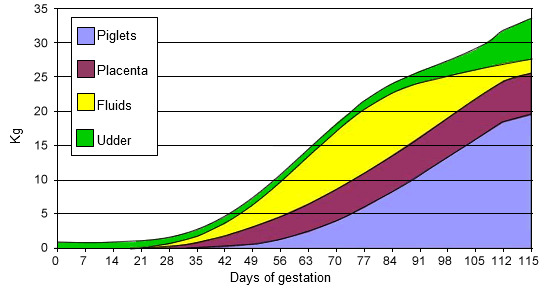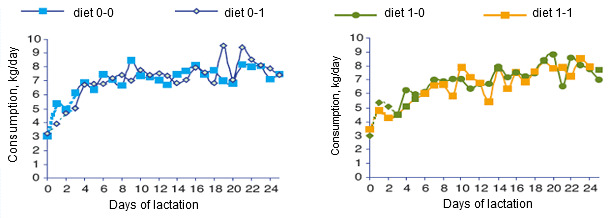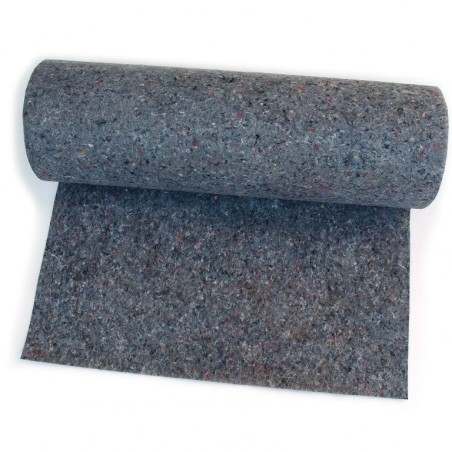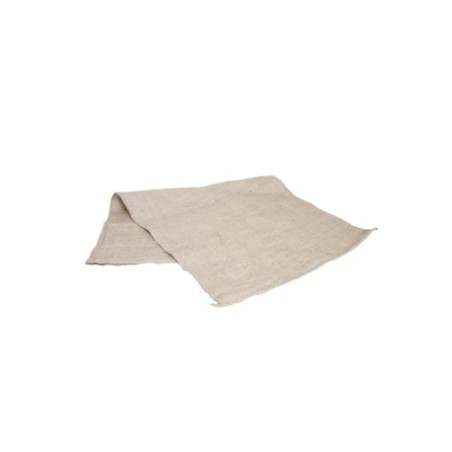When we think about how to feed a sow in the farrowing room there are several questions that we normally ask ourselves:
- Should we use the feed given during the gestation stage before the farrowing?
- Must we ration feed before and after farrowing?
- Must we give some ind of fibre-rich supplement during the farrowing?
- Must we give different feeds before, during and after the farrowing?
- How to feed a sow well so it reaches its maximum potential? Must we increase the amount of feed quickly?
We will try to give some practical pieces of advice regarding how to feed a sow, especially during the peripartum.

Every time it is more frequent to use a special peripartum feed or "transition" feed between the getation and lactation feed. It is given from the moment of the entrance of the sow in the farrowing room until 2-3 days after farrowing and they are normally characterized by:
- Having an electrolytic balance that reduces the urine pH, which reduces, in turn, the risk of genitourinary infections and favours the intestinal absorption of calcium and its mobilisation from the bones. High levels of dietary fibre will reduce the risk of constipation.
- They also normally include omega-3 fatty acids, high levels of vitamin E and medium-chain fatty acids, which improve the vitality of the piglets.
In general, and from a practical point of view, we can affirm that the use of the peripartum feeds entails an improvement in the health status of the sow, reducing the risk of urinary tract infections and favouring quicker farrowings with a lower number of stillborn piglets and, as a consequence, an increase of the piglets that are born alive, which have a higher vitality (lower mortality during lactation) and a higher number of piglets weaned per farrowing.
In different field monitorings carried out for more than a year, we have seen improvements of around 0.25 weaned piglets per litter. In the following table we show a test in a commercial farm. Although the sows that consumed more prepartum feed farrowed more total piglets (+0.22), they weaned 0.5 piglets more per litter due to a higher survival rate (+3.32%).
| Control | Prepartum | Difference | |
| No. of farrowings | 1129 | 1127 | -2 |
| Total piglets born | 13.20 | 13.42 | 0.22 |
| % stillborn | 8.93 | 8.60 | -0.33 |
| Piglets born alive | 11.99 | 12.22 | 0.23 |
| % Losses | 13.87 | 11.54 | -2.34 |
| % Survival | 78.52 | 81.83 | 3.32 |
| Weaned piglets | 10.54 | 11.04 | 0.50 |
Use of prepartum feeds in practice
The use of two different feeds for the sows in the farrowing room is not always an easy approach, because it normally entails giving the feed manually and having to have two silos or use sacks.
The farms in which we implemented this system are, in general, big or very big, and they have a good organization of the work and the staff. In farms with a medium or small size that wish to use this system, we normally recommend a working system in 3- or 4-week batches in order to bring together a high number of farrowings per batch and, in this way, facilitate the handling/management.
Management of the feeding during the pre- and the postpartum
There is great controversy whereas rationing should be carried out or not. The recommendation regarding rationing is due to the belief that not doing it can cause udder oedema, a milk production decrease, diarrhoeas in the piglets or a reduction in the feed consumption in the 1st or 2nd week of lactation.
Must we ration during the prepartum?
We must bear in mind that the two last weeks of the gestation are the ones with the maximum need for foetal growth (the foetuses double their weight), and this entails en extra requirement of 0.7-1 kg of feed per day. The field test shows that an excessively low feed consumption before the farrowing limits the ability of the farmer for increasing the feed consumption of the sows at the beginning of the lactation. So, when the sows enter the farrowing quarters they must maintain the same feed consumption level that they had during the pregnancy, normally 3-3.5 kg. On the farrowing day give at least 1.5 kg of feed.


Figure 1. Evolution of the weight of the piglets, the placentas, the fluids and the udder during the gestation.
Must we ration during the postpartum?
The lactating sows have very high nutritional requirements and, in general, they are not able of eating what they need. The nutritional deficit is compensated, in a higher or lower degree, by the mobilisation of body reserves.
A certain percentage of the sows undergo a decrease in feed consumption independently that they have been previously rationed or not. Nevertheless, the sows that have been rationed have a lower global feed consumption during the lactation period, a higher loss of body condition score, a lower weight of the litter at weaning and a lower subsequent reproductive performance. So, the goal after the farrowing is to reach the maximum attainable consumption of nutrients as soon as possible. In order to achieve it we can follow the recommendations contained in the following table:
| Kg of feed | ||
| Day | Minimum | Goal |
| Prepartum | 3-3.5 | 3-3.5 |
| Farrowing | 1.5-2 | 1.5-2 |
| L-1 | 3.5 | 3.5 |
| L-2 | 4 | 5 |
| L-3 | 4.5 | 5.5 |
| L-4 | 5 | 6 |
| L-5 | 5.5 | 6.5 |
| L-6 | 6 | 7 |
| L-7 | 6.5 | 7.5 |
| Until weaning | Ad libitum | Ad libitum |
Although these levels may seem too high, sows fed ad libitum consume these amounts of feed voluntarily and without problems, as we can see in the following graphs of a test carried out by the INRA in which gestation diets with (1) or without (0) peas, rapeseed and beet pulp were used until the 3rd day postpartum, when lactation diets with (1) or without (0) those ingredients were given to the sows (Quiniou, 2006).

Figure 2. Evolution of the average daily consumption of feed by the sows according to the feeding in the moment of the feed transition (day 3).
Quiniou also concludes in this test that the continuation of the raw materials profile between the gestation and the lactation facilitates the voluntary consumption of feed by the sow after farrowing.
Conclusions
During the peripartum specific feeds that have proven their benefits can be used for facilitating the farrowing as well as for improving the survival of the piglets. Nevertheless, we must evaluate if this practice is feasible in all the farms. On the other hand, and regardless of the diet used, we must bear in mind that rationing the feed before and after the farrowing is not a recommendable practice.






